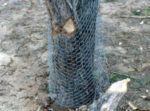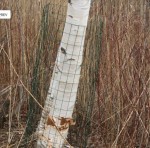After reading about Skip lisle and Patti Smith and so many folks in Vermont who care about the good works that beavers do, you start to think that maybe folks in the Green Mountain state are just smarter about beavers overall. Maybe they’re better than the rest of us and have fixed all their ignorance and intolerance.
HA!
Letter: A simple proposal to restore rivers
 I grew up in Pawlet. I grew up fishing the Mettowee, the Otter Creek, the Poultney, the Castleton, and the Battenkill rivers. A lot has changed in those rivers since I was a kid. The fishing has declined drastically! I’ve heard of a few plans that the state is thinking about doing to change things around. I think that the plans that I have heard are a waste of time and money.
I grew up in Pawlet. I grew up fishing the Mettowee, the Otter Creek, the Poultney, the Castleton, and the Battenkill rivers. A lot has changed in those rivers since I was a kid. The fishing has declined drastically! I’ve heard of a few plans that the state is thinking about doing to change things around. I think that the plans that I have heard are a waste of time and money.
I have a few suggestions. First thing we need to look at is, what were the rivers like and what were the fishing regulations back when the fishing was good? Well, in the ’70s, there was a length limit of 6 inches for trout. Back when the fishing was good, there were common suckers, horned dace, shiners, and creek chubs in the rivers. There are none of these in the rivers now! What are the fish supposed to feed on?
Back when fishing was good, there weren’t many (if any) beaver dams. Now the rivers are backed up with them to the point that there is so much silt on the bottom that the fish can’t spawn or you can’t walk through it! The two rivers that are the worst for beaver dams are the Otter Creek and the Battenkill River. If you go north on the Battenkill, above Dufresne’s Pond the problem begins. It is the worst from Toll Gate road to route 7A. It is one dam backed up to another dam, to another dam, to another dam all the way to route 7A. The last time I fished that stretch of the river, I was in 10 inches of water and 3 feet of silt. Back when fishing was good, I used to fish that stretch. It was clay bottom and the fish were plentiful and I mean big fish (20-plus inches) and plenty of them!!! The Otter Creek south of the Mount Tabor road is the same as the upper part of the Battenkill. Beaver dam backed up to beaver dam.
See when I said “back when the fishing was good” I meant when I was a kid. In the 1970’s. There were a lot more fish then. I’m assuming that was the beginning of history because it’s where I started. (I have zero idea of what it was like in the 1870’s or the 1670’s because I’ve never opened a book in my life.) But I assume that since there were more fish and zero beaver when I was a kid (A) must have caused (B) and I have a solution! Wait until you hear my clever plan.
This is my thought. It would be the cheapest fix for the state. Start at the lowest beaver dam in any river (not just the rivers I mentioned). Tear that dam out (I’m talking from one side of the river to the other side! No part of the dam is left). Let the water level lower and the silt wash away down stream. Move up the river to the next dam and do the same. Keep doing this until there are no more dams in the river. I know, people are going to complain about the silt in the river. There’s two fixes for that. Either clean the silt out with machines or leave it. The following spring, when the snow melts and the rivers start to run deep and fast, it will clear out the silt. Let the rivers get clean again. Back to pebble or sand bottoms.
Am I on candid camera? Is this a joke? Is the writer of this letter Paul Ryan who thinks we can eliminate poverty by getting rid of food stamps? Sure Dan Wood of Hampton New York. Rip out all the dams. Kill all the beavers. I’m sure that those crazy folks at NOAA and Trout unlimited got it all wrong. Never mind the fish that would drown in silt from all the excavation, perish of drought in the summer and freeze in the winter without deeper pools. I’m sure you’re right.
It gets better.
Thirdly, we have invasive species that need to be taken care of, cormorants and mergansers. They were never around when fishing was good. They are an invasive species. They do not belong. Get rid of them!
If we do these things, I can see the rivers making a huge comeback within three to five years.
I can’t even….
I’m sure the editor published this letter to let his opinions look foolish. Surely there are plenty of folks that remember fishing was always better near a beaver pond. Right? Let’s ask the folks at Fishbio. I’m sure they have some thoughts about this.
Make sure you read the subtitles!
Film Friday: Busy Beavers of the Tuolumne River 
Beavers are considered “ecosystem engineers”: their busy dam building activities in rivers can slow water down and create important habitat for salmon and other fishes. Our Vaki Riverwatcher automated fish counters also regularly document beavers swimming by – so we decided to make a film about their activities! This film was also featured in the 2nd Annual Tuolumne River Film and Culture Festival in Atherton, California. Learn more about the relationship between beavers and salmon, and enjoy today’s Film Friday!


 Pewaukee Lake is a five mile fishing spot in Wisconsin. It is best known for it’s inland sailboat races. Not remote in any way, it is a popular summer visit for Milwakee residents, who once upon a time depended on ice harvested from its shores.
Pewaukee Lake is a five mile fishing spot in Wisconsin. It is best known for it’s inland sailboat races. Not remote in any way, it is a popular summer visit for Milwakee residents, who once upon a time depended on ice harvested from its shores.




 attacked him out of nowhere.
attacked him out of nowhere.

 Wow this story even has the obligatory warden quote saying beavers aren’t normally like that. Hahahaha! Is there anything else these professionals do besides answer ridiculous questions from reporters? Did anyone have the nerve to honestly ask this question out loud?
Wow this story even has the obligatory warden quote saying beavers aren’t normally like that. Hahahaha! Is there anything else these professionals do besides answer ridiculous questions from reporters? Did anyone have the nerve to honestly ask this question out loud?


 The city of Bozeman and the U.S. Forest Service began talking about tearing out the dam in late August. A news release sent out Wednesday said the dam is “large enough to create a public safety concern downstream due to increased water volume in the lake.”
The city of Bozeman and the U.S. Forest Service began talking about tearing out the dam in late August. A news release sent out Wednesday said the dam is “large enough to create a public safety concern downstream due to increased water volume in the lake.”



































